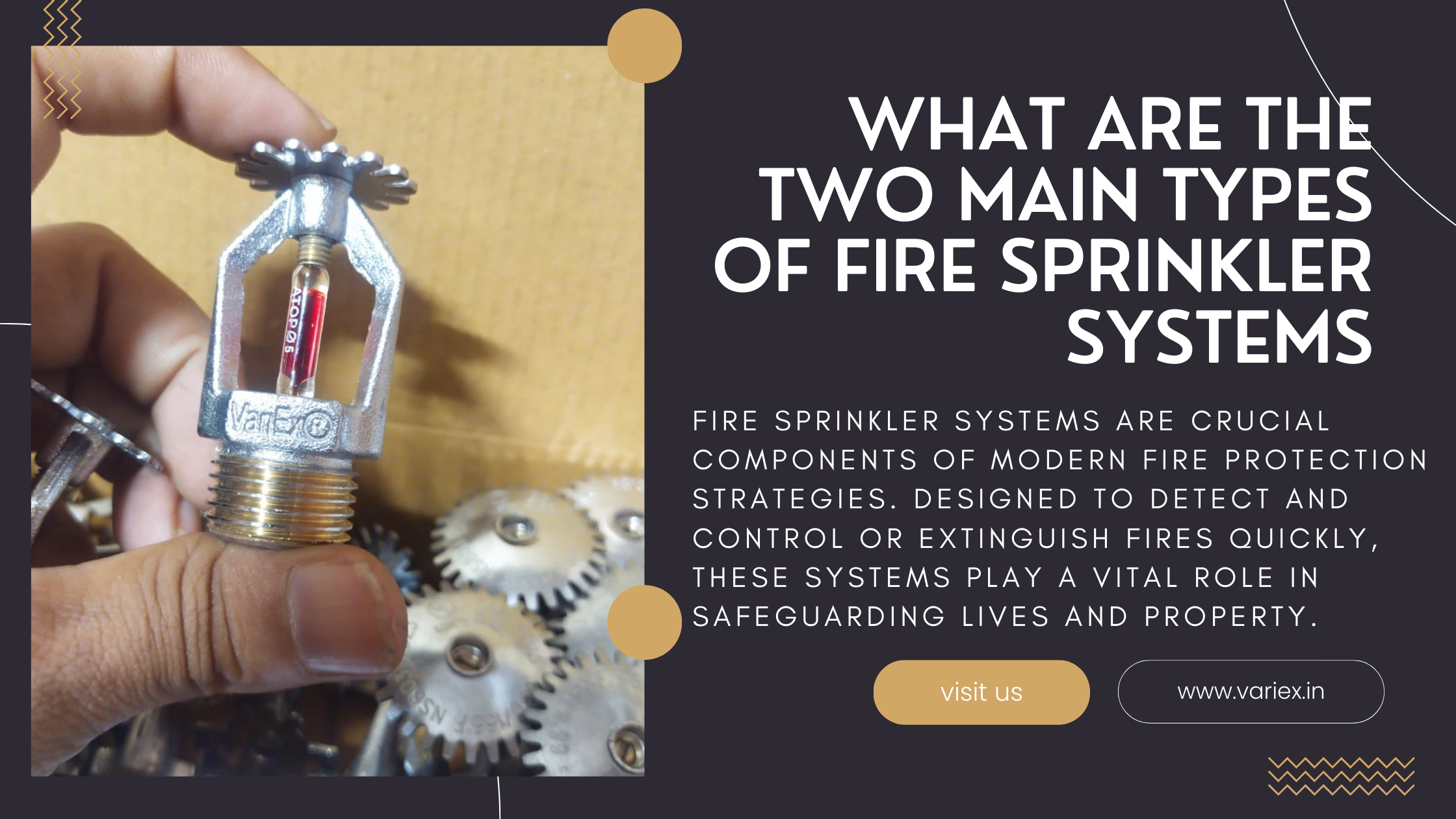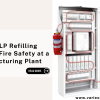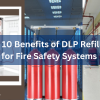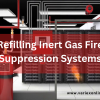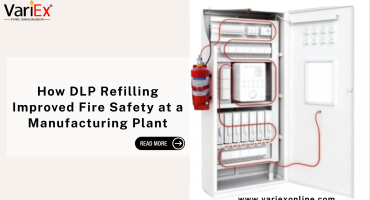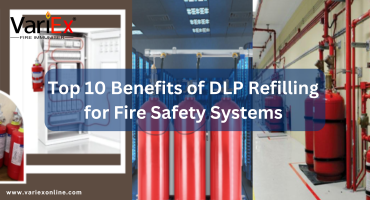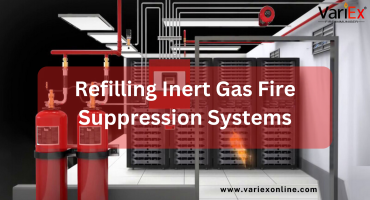![]()
Fire Immuniser
+91-7829629111
Email: info@variex.in
Varistor Technologies Pvt. Ltd.
Block-1, First Floor, Ardente Office One, Hoodi Circle, ITPL Main Road, Bengaluru, Karnataka 560048, IN
What Are The Two Main Types Of Fire Sprinkler Systems
What Are The Two Main Types Of Fire Sprinkler Systems
Fire sprinkler systems are crucial components of modern fire protection strategies. Designed to detect and control or extinguish fires quickly, these systems play a vital role in safeguarding lives and property. Among the various fire sprinkler systems available, wet pipe systems and dry pipe systems are the two main types most commonly installed in residential, commercial, and industrial settings.
This comprehensive guide delves into the details of these two primary sprinkler system types, their mechanisms, applications, benefits, and limitations.
Table of Contents
- Introduction to Fire Sprinkler Systems
- Importance of Fire Sprinkler Systems
- Overview of Wet Pipe and Dry Pipe Systems
- Wet Pipe Systems
- Mechanism
- Advantages
- Limitations
- Applications
- Dry Pipe Systems
- Mechanism
- Advantages
- Limitations
- Applications
- Comparison Between Wet Pipe and Dry Pipe Systems
- Choosing the Right System for Your Needs
- Installation and Maintenance Requirements
- Regulatory Compliance and Standards
- Advances in Fire Sprinkler Technology
- Conclusion
Importance of Fire Sprinkler Systems
Fire sprinkler systems are vital for:
- Rapid Fire Control: Minimize the spread of fire before it becomes unmanageable.
- Life Safety: Protect occupants by reducing heat, smoke, and toxic gases.
- Property Protection: Prevent costly damage to structures and contents.
- Regulatory Compliance: Fulfill legal and insurance requirements for fire safety.
Overview of Wet Pipe and Dry Pipe Systems
Wet pipe and dry pipe systems are the two most widely used types of fire sprinkler systems. While both serve the same purpose of fire suppression, they differ significantly in design, operation, and application.
Wet Pipe Systems
Mechanism
Wet pipe systems are the simplest and most commonly installed fire sprinkler systems. In these systems:
- Pipes are always filled with water, ready for immediate discharge when a sprinkler head is activated by heat.
- The system relies on heat-sensitive elements (e.g., glass bulbs or fusible links) in sprinkler heads to release water only in areas where the fire is detected.
Advantages
- Simplicity: Straightforward design ensures easy installation and operation.
- Immediate Activation: Water is discharged instantly when the system is triggered.
- Reliability: Minimal moving parts reduce the likelihood of system failure.
- Cost-Effective: Lower installation and maintenance costs compared to other systems.
Limitations
- Freeze Risk: Unsuitable for environments where temperatures drop below freezing, as water in the pipes can freeze and damage the system.
- Water Damage: May cause collateral damage to sensitive equipment or materials.
Applications
Wet pipe systems are ideal for:
- Residential buildings.
- Offices and commercial spaces.
- Warehouses with controlled environments.
- Public buildings like schools and malls.
Dry Pipe Systems
Mechanism
Dry pipe systems are designed for environments where the risk of freezing is a concern. In these systems:
- Pipes are filled with pressurized air or nitrogen instead of water.
- When a sprinkler head is activated, the pressurized air escapes, allowing water to flow into the pipes and discharge through the activated sprinkler head.
Advantages
- Freeze Protection: Suitable for environments with sub-zero temperatures.
- Delayed Water Discharge: Reduces the risk of accidental water damage in areas with sensitive materials.
Limitations
- Delayed Response: The discharge of water is slightly delayed due to the time required for air to escape.
- Higher Costs: More complex design results in higher installation and maintenance expenses.
- Maintenance Requirements: Requires regular inspections to ensure the air pressure system is functioning correctly.
Applications
Dry pipe systems are best suited for:
- Unheated warehouses.
- Parking garages.
- Cold storage facilities.
- Outdoor or exposed areas where freezing temperatures are common.
Comparison Between Wet Pipe and Dry Pipe Systems
Feature | Wet Pipe Systems | Dry Pipe Systems |
|---|---|---|
| Design | Pipes filled with water. | Pipes filled with pressurized air or nitrogen. |
| Activation | Immediate water discharge upon sprinkler activation. | Air escapes first, then water flows. |
| Suitability for Freezing Conditions | Unsuitable. | Designed for freezing environments. |
| Response Time | Instantaneous. | Slight delay due to air release. |
| Maintenance Needs | Low. | Higher, due to the air pressure system. |
| Cost | Lower installation and maintenance costs. | Higher costs due to complexity. |
| Applications | Controlled temperature environments. | Unheated or freezing areas. |
Choosing the Right System for Your Needs
The choice between wet pipe and dry pipe systems depends on several factors:
- Environmental Conditions:
- Use wet pipe systems in temperature-controlled spaces.
- Opt for dry pipe systems in areas prone to freezing.
- Fire Risks and Hazards:
- Assess the type of materials stored and their susceptibility to fire and water damage.
- Budget:
- Wet pipe systems are more cost-effective for general use.
- Dry pipe systems may require a higher upfront investment but are essential in specific conditions.
- Regulatory Requirements:
- Ensure compliance with local fire codes and NFPA standards.
Installation and Maintenance Requirements
Wet Pipe Systems
- Installation: Simpler and quicker due to straightforward design.
- Maintenance: Requires periodic inspections to check for leaks and ensure the system is pressurized.
Dry Pipe Systems
- Installation: More complex due to additional components like air compressors and valves.
- Maintenance: Regular checks for air pressure, valve operation, and pipe integrity are essential to prevent system failure.
Regulatory Compliance and Standards
Both wet pipe and dry pipe systems must adhere to guidelines set by:
- NFPA 13: Standards for the design and installation of fire sprinkler systems.
- Local Building Codes: Ensure systems meet regional safety requirements.
- Insurance Policies: Many insurers mandate the use of approved fire sprinkler systems to reduce fire-related risks.
Advances in Fire Sprinkler Technology
Technological advancements are improving the efficiency and reliability of wet and dry pipe systems:
- Smart Sprinkler Systems: IoT-enabled systems provide real-time monitoring and remote control capabilities.
- High-Performance Sprinkler Heads: Enhanced designs for quicker response times and better coverage.
- Corrosion-Resistant Materials: Prolong the lifespan of pipes and components in challenging environments.
- Eco-Friendly Systems: Water-efficient sprinklers and systems designed to minimize water waste.
Conclusion
Wet pipe and dry pipe systems are the backbone of modern fire sprinkler technology, each serving unique purposes based on environmental conditions and specific fire risks. Wet pipe systems are cost-effective, reliable, and ideal for temperature-controlled environments, while dry pipe systems offer freeze protection and are indispensable for cold or unheated spaces.
Selecting the right system requires a thorough assessment of fire risks, environmental factors, and compliance requirements. Proper installation and regular maintenance ensure these systems perform effectively, providing peace of mind and robust fire protection for years to come.
Frequently Asked Questions
The key difference is that wet pipe systems are always filled with water, while dry pipe systems use pressurized air or nitrogen until activated.
No, wet pipe systems are not suitable for freezing conditions as the water in the pipes can freeze and cause damage.
Dry pipe systems are generally more expensive due to their complex design and maintenance requirements.
Yes, wet pipe systems respond instantaneously, while dry pipe systems have a slight delay due to air release.
Both systems require monthly visual inspections and annual professional maintenance checks.
Final Say
At VariEx.in and VariexOnline.com, we specialize in supplying and installing top-quality fire fighting systems and equipment. From fire extinguishers to advanced suppression systems, we offer comprehensive solutions tailored to your needs. Our experienced team ensures precise installation and maintenance for optimal safety.
Trust VariEx for reliable fire protection. Contact us online or call 7829629111 to learn more.
We specialize in manufacturing, supplying, and distributing a comprehensive range of fire fighting equipment, including state-of-the-art fire extinguishers. Read our most searched blogs and find interesting information on topics such as how to use a fire extinguisher, how to calculate fire fighting water tank capacity, fire extinguisher refilling, obtaining a Fire NOC, understanding fire fighting systems, types of fire protection systems, the fire hydrant system, and the fire sprinkler system. These resources provide essential knowledge for ensuring safety and compliance with fire safety regulations. Additionally, you can explore guides on the maintenance of fire protection equipment, the latest advancements in fire safety technology, and best practices for fire risk assessment and management.
Our expertise extends to fire alarm systems, fire hydrant systems, and fire suppression systems, including fire sprinklers. Each product meets rigorous international standards for reliability and performance, ensuring effective fire safety products tailored to diverse applications and industries. Additionally, we are providing Fire Extinguisher Refilling and AMC services to ensure ongoing maintenance and operational readiness of fire safety equipment.


